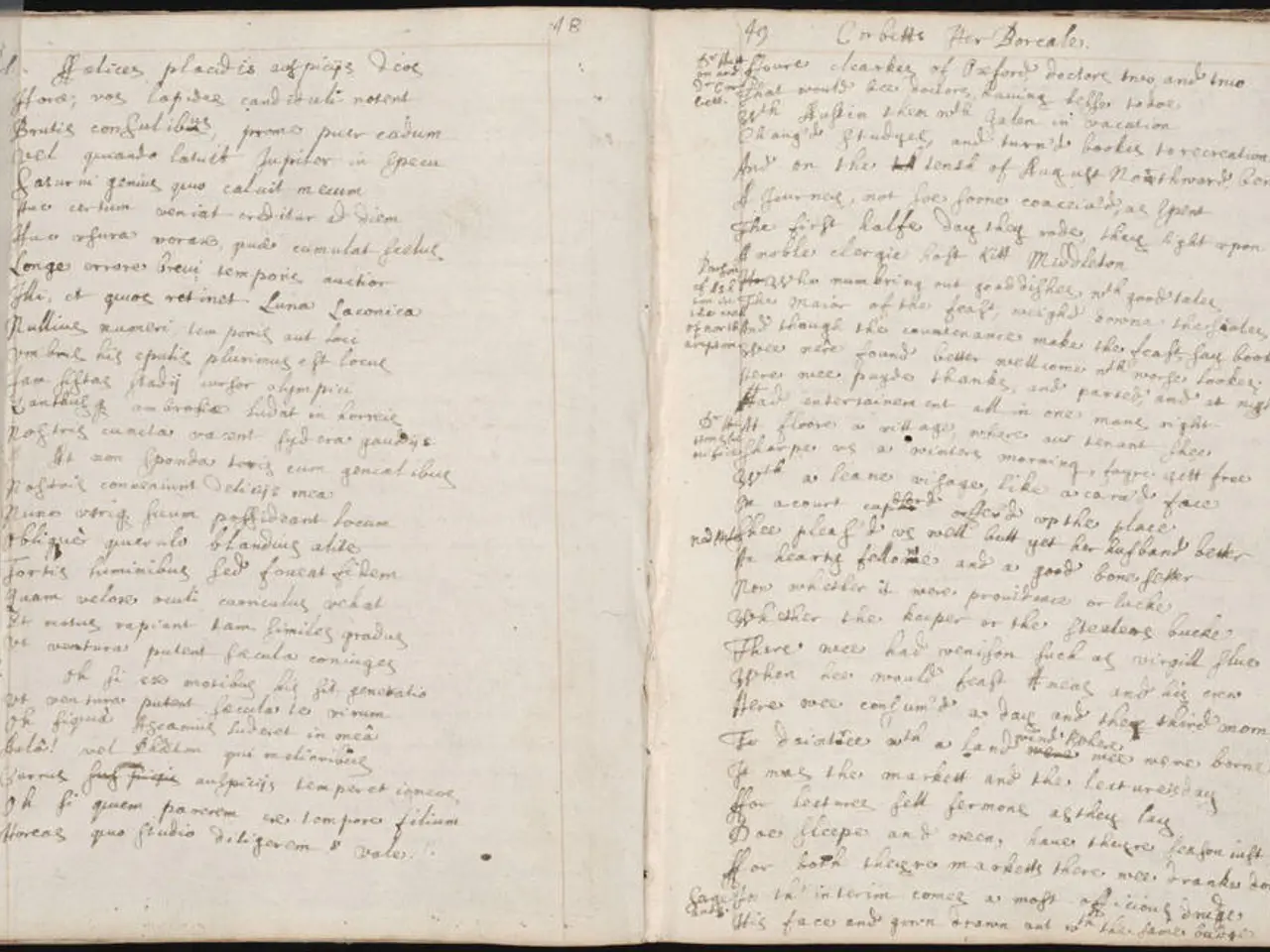Bible's Continuous Transformation: Delving into Alterations and Amendments throughout History
In the annals of religious history, few texts have undergone as significant a transformation as the Bible. The Bible's transformation over centuries is shaped by several key periods and factors involving composition, translation, and theological development.
Early Formation and Composition (9th to 3rd centuries BCE)
The Old Testament scriptures evolved as collections and revisions over centuries, influenced by the cultural and political contexts of ancient Israel and Judah. The destruction of Israel by Assyria (~722 BCE) and the Babylonian exile (587/586 BCE) were pivotal events that shaped the theological outlook and revision of texts, such as the Deuteronomistic history (Joshua, Judges, Samuel, Kings). During the Second Temple period (520 BCE – 70 CE), major religious reforms, monotheistic consolidation, and revisions of the Torah were undertaken.
New Testament Development (1st century CE)
The teachings and life of Jesus, originally transmitted orally, were eventually written down in the canonical Gospels, prompted by the deaths of eyewitnesses and the growing missionary needs of the early Christian church. These gospels were formed from oral traditions, written collections, and proto-gospels, with the Gospel of Mark often considered the earliest written account.
Translation and Standardization (from 3rd century CE onward)
Early Christians used the Septuagint (Greek translation of Hebrew Scriptures). The Vulgate, a Latin translation completed by St. Jerome in 405 CE, became the Western Christianity standard for over a millennium. Hebrew scholars between the 6th and 10th centuries CE completed the authoritative Masoretic Text for the Hebrew Scriptures. Post-printing press (from 1450), the number of Bible translations rapidly increased, facilitating broader accessibility across languages such as Coptic, Ethiopian, Gothic, Syriac, Arabic, and English.
Key Factors Contributing to This Transformation
- Historical and political upheavals: The Assyrian conquest, Babylonian exile, and later events influenced the theological reinterpretation and compilation of biblical texts.
- Oral tradition to written texts: Transitioning from oral to written accounts shaped the content and form of the New Testament, impacting textual consistency and transmission.
- Linguistic and cultural spread: As Christianity spread geographically, translations were essential to adapt the Bible into vernacular languages, making it accessible to diverse populations.
- Textual transmission and preservation: The meticulous copying by scribes (e.g., Masoretes) and later print technology preserved and disseminated biblical texts widely, allowing for variations and corrections.
- Religious and doctrinal consolidations: Debates and theological priorities influenced the inclusion or exclusion of certain books and the emphasis on specific doctrines or interpretations throughout history.
Together, these periods and factors represent a complex process of religious, linguistic, and cultural development that has shaped the Bible into the diverse and historically rich body of literature it is today.
However, controversies can arise from perceived alterations to the "original" meaning of the biblical text, particularly those driven by societal or theological agendas. Textual variants among ancient manuscripts present a challenge to editors, necessitating careful evaluation and informed decisions about which readings to include in modern translations.
The Bible is a collection of books, written over centuries by various authors in different languages. The Masoretic Text, a standardized Hebrew Bible produced by Jewish scholars known as the Masoretes from the 7th to 10th centuries CE, remains the basis for many modern translations. Modern translations of the Bible employ different approaches, ranging from literal translations to dynamic equivalence translations that prioritize clarity and readability.
Chapter and verse divisions in the Bible were introduced in the 13th and 16th centuries to facilitate study and reference. The Old Testament, primarily in Hebrew, and the New Testament, in Koine Greek, are the two main sections of the Bible. Editorial decisions, such as the selection of books for inclusion in the canon, the arrangement of the books, and the addition of chapter and verse divisions, have also shaped the form and content of the Bible.
The Bible has been revised and edited countless times over the centuries due to factors such as changes in language, textual discoveries, and theological interpretations. Translation philosophies, such as formal equivalence and dynamic equivalence, significantly shape how the Bible is edited and rewritten. Different denominations often approach Bible translation and editing with distinct theological priorities and interpretive traditions.
Readers can evaluate different Bible versions by considering the translation philosophy employed, researching the translators' backgrounds, examining critical reviews, and comparing different versions of the same passage. The Protestant Reformation in the 16th century led to the emphasis on making the Bible accessible to ordinary people in their own languages, with translations into German and English by Martin Luther and William Tyndale, respectively.
It is important to remember that the original texts, or autographs, no longer exist, and what we have today are copies of copies. The transmission of the Bible involved both professional scribes and communal efforts, with variations inevitably creeping in due to errors in copying or intentional changes. The Septuagint, a Greek translation of the Old Testament produced in Alexandria, Egypt, in the 3rd century BCE, was crucial in spreading the Hebrew Scriptures to a wider audience. The Vulgate, a Latin translation produced by Jerome in the late 4th century CE, became the standard Bible of the Western Church for centuries.
In conclusion, the Bible's transformation over centuries is a testament to the adaptability and resilience of religious texts in the face of cultural, linguistic, and theological changes. As a living document, the Bible continues to evolve and be interpreted in diverse ways, reflecting the richness of human history and the enduring power of faith.
- For individuals seeking self-development and a greater understanding of religious history, studying the evolution of the Bible offers valuable insights into the changes and adaptations that have occurred over time, reflecting societal, cultural, and theological shifts.
- As the Bible has undergone various revisions and editions throughout history, the education-and-self-development seeker may find it beneficial to explore the different translation philosophies employed, such as formal equivalence and dynamic equivalence, to gain a nuanced perspective on the text's meaning and context.




